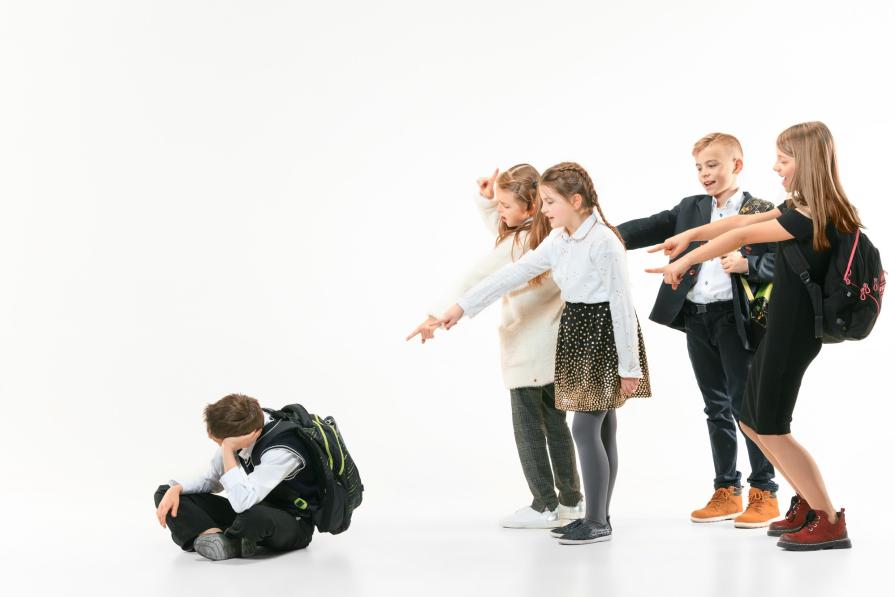What is bullying: a hyped trend or a real threat? Are there ways to deal with bullying in an environmentally friendly way? How to make school safe? What to do with aggressor children? Let's figure it out together.

Causes of bullying

Before we dive into ways to deal with bullying, it's important to understand its causes. Bullying is purposeful aggressive behavior towards another person. Usually, bullying is asymmetrical, that is, the victim cannot adequately respond to the aggressor.
Why do children start bullying? The main reason is the desire to gain popularity and status among peers. In a way, the struggle for territory and leadership positions: aggressors give free rein to their negative emotions in order to feel stronger and more important, so they choose victims based on special characteristics - someone may seem weaker, someone stands out outwardly, and someone just behaves insecurely.
Children's bullying

Children's bullying has its own characteristics. Children understand what inequality is – some are stronger, some are weaker, but they do not always understand what pain they can inflict on their classmates with their behavior. They can perceive outbursts of rage and hurtful words as the norm of communication, if they communicate this way, for example, in their family. Children adopt the manner of behavior of adults, and if quarrels and shouting at home are the norm, then the child will carry this "norm" to school or another circle of peers. Silence and ignorance of problems by adults is also an alarm bell, because then the aggressor will feel his permissiveness and approval of his "norm".
What to do if you encounter bullying?
When we encounter bullying, we want to immediately punish the perpetrators. But do not rush - punishment is punishment, and it is unlikely to do without it, but try to find out the reasons for such behavior. Aggression often comes from problems in the family, lack of attention or personal problems of the student - such behavior can be a desperate signal that the child needs help himself. Teachers and school psychologists should be involved in this process so as not to traumatize children. The victim will not be able to cope with his aggressor on his own, and the aggressor will not be able to cope with his problems on his own.
It will be useful to involve peers in discussing the actions of the aggressor: in this case, a situation of controlled social pressure is created, where most children will be able to express their dissatisfaction with aggressive behavior (of course, if the situation is not neglected and the whole team is not tightly intimidated). The aggressor will be able to feel that his actions are unacceptable, and this can be a powerful incentive to change behavior.
It is worth finding ways to direct the energy of an aggressive child in a peaceful direction. Sports sections, creative circles will be an excellent alternative: for example, participation in team sports will help the child learn to work in a team, respect others and cope with his aggression, spilling it out into a safe channel.
Rules for dealing with a victim of bullying

With victims of bullying, you need to be as careful and sensitive as possible. It is important to talk to the child, ask about his emotions and experiences, understand what he really feels. Often children are afraid to talk about their problems, fearing that this will only aggravate the situation.
Never convince a child that he is a victim if he does not feel like one himself! This can worsen his condition and instill a sense of helplessness. Instead, support him, help him understand that his feelings are normal and that you are there to help, show him that he is not alone in this situation and that there is always a solution.
It is also important to work on the development of the child's confidence. Help him find his inner strength. Perhaps it is worth offering to enroll in self-defense courses or find a hobby in which he will be successful? At school, children not only acquire knowledge, but also take important lessons in socialization, and having learned to fight back against aggressors, they will be able to cope with any difficulties in adult life.
Ways to deal with bullying in schools
There are several effective ways to help combat bullying in schools:
- Alternative adult. The child should have a trusted adult to whom he can turn in case of trouble: it can be a teacher, psychologist, social worker, guardian or one of the relatives (and often it is not even a parent, but an older sister or brother). This person is needed to listen and support the child, to help understand the situation.
- Mediation services. This is a special organization for negotiations between the parties to the conflict - this approach helps to understand the situation and find a solution that satisfies everyone. It is important that mediators are well-prepared professionals and know how to conduct such negotiations correctly.
- Bullying prevention programs. Today, there are a number of proven and successful anti-bullying programs in the world, for example, the Finnish KiVa and the Italian No Trap. They are aimed at creating a healthy and friendly atmosphere in the classroom, their goal is to prevent bullying in the early stages. Programs include trainings for teachers and students, special classes and other activities.
Mistakes in the fight against bullying

The most common mistake in the fight against bullying is excessive administrative zeal. Severe punishments can be counterproductive, they will only push the aggressors to new manifestations of cruelty. For example, dropping out of school does not solve the problem, but simply moves it to another place.
It is important for adults to remember the principle of "do no harm". Any action must be carefully considered. The main thing is to understand that everyone is interested in creating a safe and friendly atmosphere for children, so even punishments should be fair and appropriate to the situation. Conventionally, if you give the aggressor a demonstrative flogging, then he will later take revenge on the victim twice.
Bullying is a serious problem that many schoolchildren face. It can and should be fought! The main thing is to approach this issue consciously, with an understanding of the causes and characteristics of children's behavior. Then children will feel safe at school (and not only).













